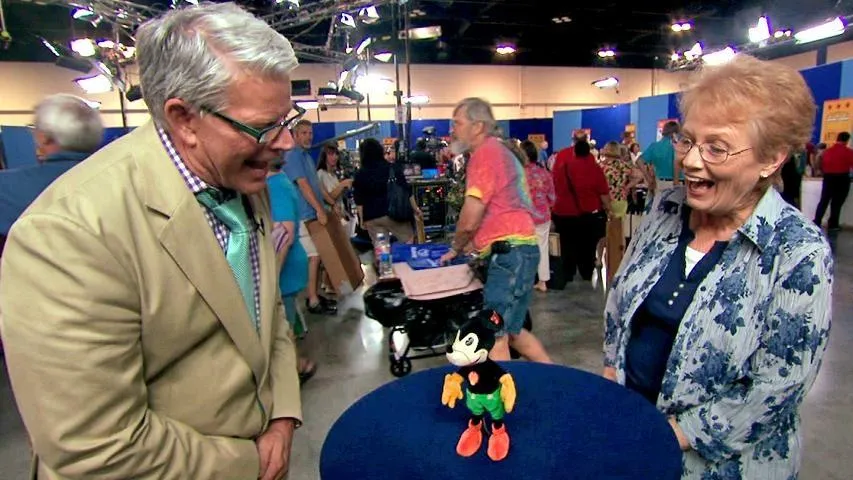GUEST: My husband's great-uncle Jake was a correspondent for the Philadelphia Ledger in the '30s. He enjoyed traveling and collecting, and he particularly enjoyed collecting Asian pieces.
APPRAISER: This is made of jade. The design, the shape and the material indicate that it's Chinese.
GUEST: Okay.
APPRAISER: And this is a shape that in China we refer to as a Hu, H-U, a very specific type of vase form that is copying ancient bronze design. If you look at the top, you'll see that there's a couple of eyes, and this forms a ridge line down the front, and this is a mask, which we call a Tao Te. And then as you go down, you'll see that there's these unusual kinds of scrolls. And they're over a ground of a repeating interlace pattern. Well, this interlace pattern is looking back to something called a leiwen-- L-E-I-W-E-N—design that you find on ancient Chinese bronze vessels. When you turn it... you have this animal head, and you see these stylized horns and the face. And coming out of the mouth is this loop onto which a loose ring handle has been carved. Part of the reason for having this loose ring is to show the skill of the carver who worked in stone. The other thing that they wanted to do was to emphasize the great age and antiquity of it. So they purposely chose this stone to be a stone that had discolorations that were natural in the surface to give it a sense that this is something of great antiquity, that perhaps it had been buried for a long time. So this was probably made about 1880 to 1900.
GUEST: Okay.
APPRAISER: So that's the end of the Qing dynasty. Today, if this came up for auction, we would expect it to sell between $8,000 and $12,000.
GUEST: Okay. (laughs) I am very surprised. That's marvelous.
APPRAISER: If you had come a few years ago, it wouldn't have been anywhere near that.











